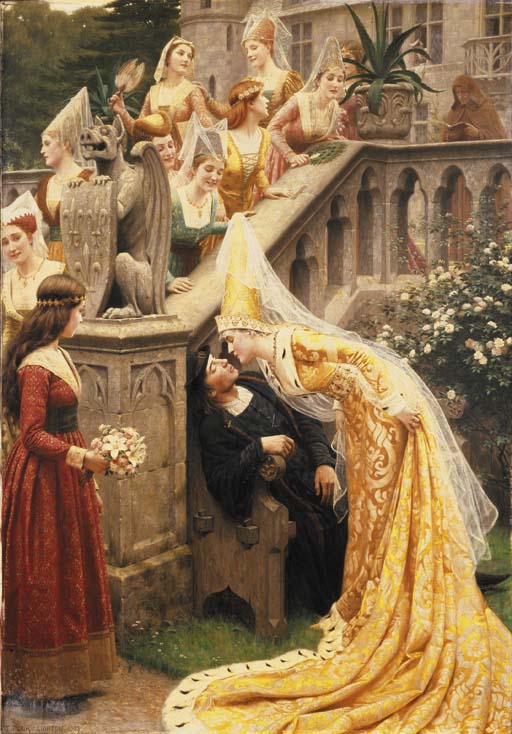On 27 January 2015, the Centre was delighted to welcome Emily Wingfield (University of Birmingham) to discuss ‘The daughters of James I and their books’, which continued the ‘Scotland and Europe’ seminar series. Below is this listener’s brief summary of the lecture.
‘Royal books’ encompass texts written or commissioned by members of the royal family, books dedicated or given to these individuals, and even include books they are known to have owned or read.
Emily’s presentation focused on one of James I of Scotland’s three daughters: the eldest, Princess Margaret. All of James’ daughters were married to prominent European nobles, and in 1436 Margaret departed Dumbarton with an entourage of 1,200 to marry Louis, the Dauphin (and later XI) of France. It was not a happy marriage, and Margaret died childless on 16 August 1445, amid rumours she suffered ill-treatment at the hands of a jealous courtier, Jamet de Tillay.
Margaret was a great favourite of her in-laws and Charles VII of France ordered an inquest into her death, which was attributed, in part, to her habit of staying up all night writing rondeaux (poems), sometimes as many as ‘twelve a day’. It was observed that ‘this was not good for her’.

Many of Margaret’s courtiers expressed their grief at her death through poetic verse, and some appear to make literary allusions to the abuse she suffered at the hands of Jamet de Tillay. Her piety is frequently emphasised in the surviving eulogies, and her beauty is said to outstrip that of Helen of Troy. In several manuscript collections of medieval French poetry, eulogies to Margaret are often placed alongside other poetic reflections on the transience of life.
In Liber Pluscardensis, one of the eulogies to Margaret was (loosely) adapted into Scots, and it downplays the theme of life/death in favour of presenting Margaret as the archetypal princess and wife (rather idealistically considering her strained relationship with Louis).
During her own lifetime, Margaret gave a book of hours belonging to her to Abbot Nicolas Goddard, as security for the debt she had accrued in commissioning the building of at Saint-Laon, where she hoped to be buried. Emily speculated that some of the anonymous poems collected alongside those of her courtiers could potentially be Margaret’s own compositions, however, Louis reportedly destroyed her belongings after her death.
Overall, Margaret clearly continued her father’s literary legacy, much more so than her brother and later king James II. Her sisters also made significant contributions in the literary sphere, making this trio of Scottish princesses a formidable force of medieval literature.
Summary by Ross Crawford (PhD Researcher)
Our series continues next week 3 February with a seminar co-hosted with the First Millenia Studies Group. Four talks will be given: Anouk Busset, ‘Comparing the impact of Christianity on Irish, Scottish and Scandinavian sculpture’; Jamie Barnes, ‘Interpreting Viking Age stone sculpture: the evidence of hybrid practice in the Irish Sea region’; Tom Davis, ‘Reuse of Prehistoric Monuments as Viking Graves’; and Daniel MacLean, ‘What was happening in the Firthlands? Gaels, Picts and Vikings in Northern mainland Scotland’
This will be held in Room 202, 3 University Gardens at 6pm. Please note the later start time.


Wonderful to see scholarship on such a distinguished literary family. Wish I was there to attend the talk.